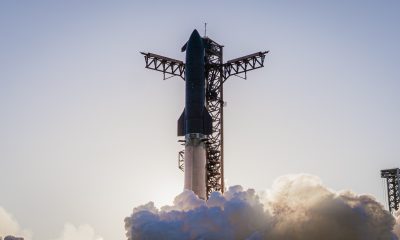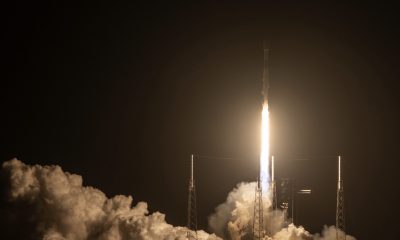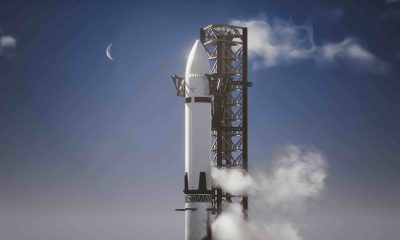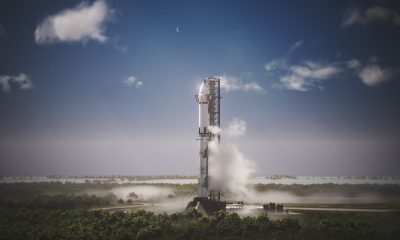

SpaceX
SpaceX’s Starship prototype set for first serious test after Raptor engine installed
In concert with South Texas’ Cameron County, SpaceX has officially scheduled the first serious test – requiring temporary road closures – of its Starship prototype, unofficially nicknamed ‘Starhopper’ in light of its ultimate goal of performing low-altitude, low-velocity hop tests.
SpaceX technicians have already successfully completed a number of unspecified tanking tests – likely with chemically neutral liquid nitrogen – and completed acceptance and installation of Raptor serial number 02 (SN02), setting the stage for the giant testbed’s first flight-critical tests. Now set to occur between
Scarcely seven days after the engine’s arrival in Boca Chica, SpaceX technicians completed the first-ever installation of a flight-ready Raptor – SN02 – on a full-scale BFR prototype known as Starhopper. Aside from marking a major symbolic milestone for the company’s next-generation rocket development program, the installation of a functional rocket engine on the first partial-fidelity vehicle prototype means that SpaceX can now enter into a new and critical stage of development: integrated flight testing.
Assuming (hopefully) that SpaceX has yet to conduct actual fueling tests of the Starship prototype without establishing roadblocks and safety perimeters, something that would be an egregious threat to nearby locals, it’s likely that this first major test – much like SpaceX’s established Falcon 9 and Heavy test regime – will involve a process known as a Wet Dress Rehearsal (WDR). A WDR would see Starhopper loaded with liquid methane and oxygen propellant – potentially anywhere from the bare minimum needed to operate a single Raptor to completely filling its tanks – to verify that the prototype’s complex plumbing system and giant tanks are operating nicely together under flight conditions (i.e. cryogenic temperatures, thermal and mechanical stresses, chemical environments, etc.). Much like routine Falcon 9 static fire tests performed both at SpaceX’s McGregor, TX test site and the launch pad, data indicating that the rocket is behaving nominally during the WDR allows the operations team to transition smoothly from a WDR into a captive static fire test, in which the vehicle’s engine(s) are briefly ignited to simulate the first few seconds prior to liftoff.
It’s relatively rare but not unusual for planned Falcon 9 or Heavy static fire tests to end during the WDR phase in cases where the launch team observes data that appears to be less than nominal. SpaceX generally takes a “better safe than sorry” approach to these sorts of operations, swallowing the costs and risk of raising customers’ ire due to delays in order to ensure the highest probability of complete launch success.
For a vehicle as utterly new and alien as Starhopper is to both SpaceX and the aerospace industry as a whole, it’s safe to say that that tendency towards caution will be readily on display throughout these first several tests, at least until the company’s operations technicians and engineers are considerably more familiar with the prototype rocket’s behavior. On the other hand, given just how shoestring the budget of this beast likely is and how rapidly SpaceX managed to go from an empty dirt lot to a hop-test-ready, 30ft/9m-diameter Starship prototype, it’s equally likely that the company – particularly CEO Elon Musk – will accept the increased risk of catastrophic vehicle failures to keep the development program as agile as possible.


As Musk himself frequently and famously is known to say, it’s far better to push hardware to failure during early testing than it is to hold back and risk largely unplanned failures during nominal operations, a lesson that SpaceX itself has learned the hard way several times. One step further, while they are at best undeniably inconvenient and expensive, major vehicle failures during testing can actually be an invaluable source of data that ultimately improves the system as a whole. For BFR, a launch vehicle meant to safely, routinely, and reliably transport as many as 100+ people both around the Earth and solar system, all possible opportunities to learn and improve the system prior to risking the lives of passengers will be an absolute necessity if SpaceX wants to ensure that customers remain willing to trust the company and its spacecraft with their lives.
Check out Teslarati’s Marketplace! We offer Tesla accessories, including for the Tesla Cybertruck and Tesla Model 3.
News
SpaceX successfully launches 100th Starlink mission of 2025
With 100 Starlink missions completed for 2025, space enthusiasts have noted that SpaceX has successfully launched 2,554 Starlink satellites so far this year.
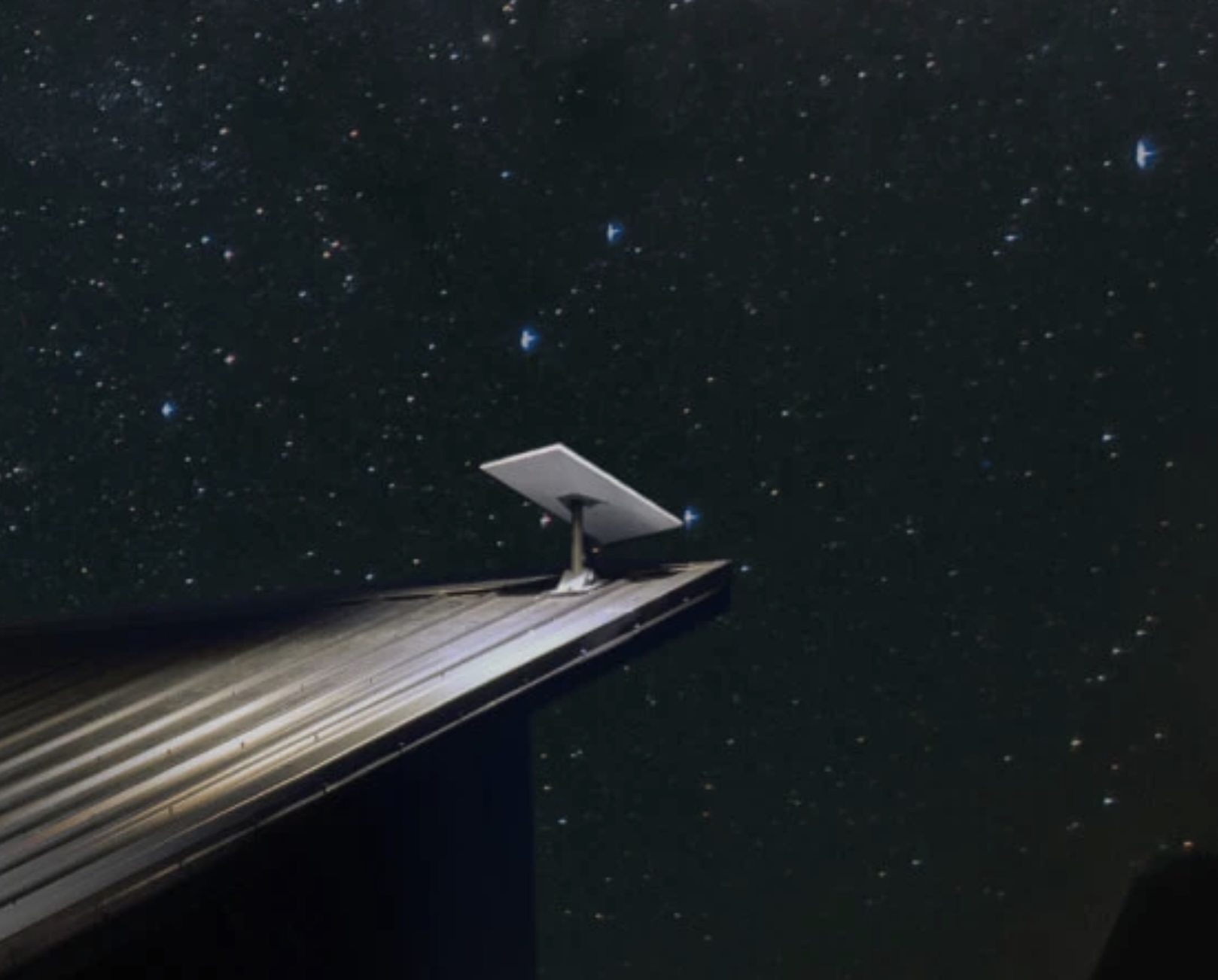
SpaceX achieved its 100th Starlink mission of the year on Friday, October 31, marking another milestone for 2025.
A Falcon 9 rocket carrying 28 Starlink broadband satellites successfully lifted off from Vandenberg Space Force Base in California at 4:41 p.m. ET, carrying another 28 Starlink satellites to Low Earth Orbit (LEO).
Falcon 9 booster’s 29th flight
Roughly 8.5 minutes after liftoff, the Falcon 9’s first stage touched down on the drone ship Of Course I Still Love You in the Pacific Ocean. This marked the booster’s 29th flight, which is approaching SpaceX’s reuse record of 31 missions.
This latest mission adds to SpaceX’s impressive 138 Falcon 9 launches in 2025, 99 of which were dedicated to Starlink, according to Space.com. The company’s focus on reusing boosters has enabled this breakneck pace, with multiple launches each week supporting both Starlink’s expansion and external customers.
Starlink’s network continues massive global expansion
Starlink remains the largest active satellite constellation in history, with more than 10,000 satellites launched, nearly 8,800 of which are currently active. SpaceX recently achieved Starlink’s 10,000-satellite milestone. With 100 Starlink missions completed for 2025, space enthusiasts have noted that SpaceX has successfully launched 2,554 Starlink satellites so far this year.
Starlink, which provides high-speed, low-latency internet connectivity even to the world’s most remote areas, has been proven to be life-changing technology for people across the globe. The service is currently operational in about 150 countries, and it currently has over 5 million subscribers worldwide. From this number, 2.7 million joined over the past year.
SpaceX
SpaceX checks off 49 lunar lander milestones in push toward Artemis III
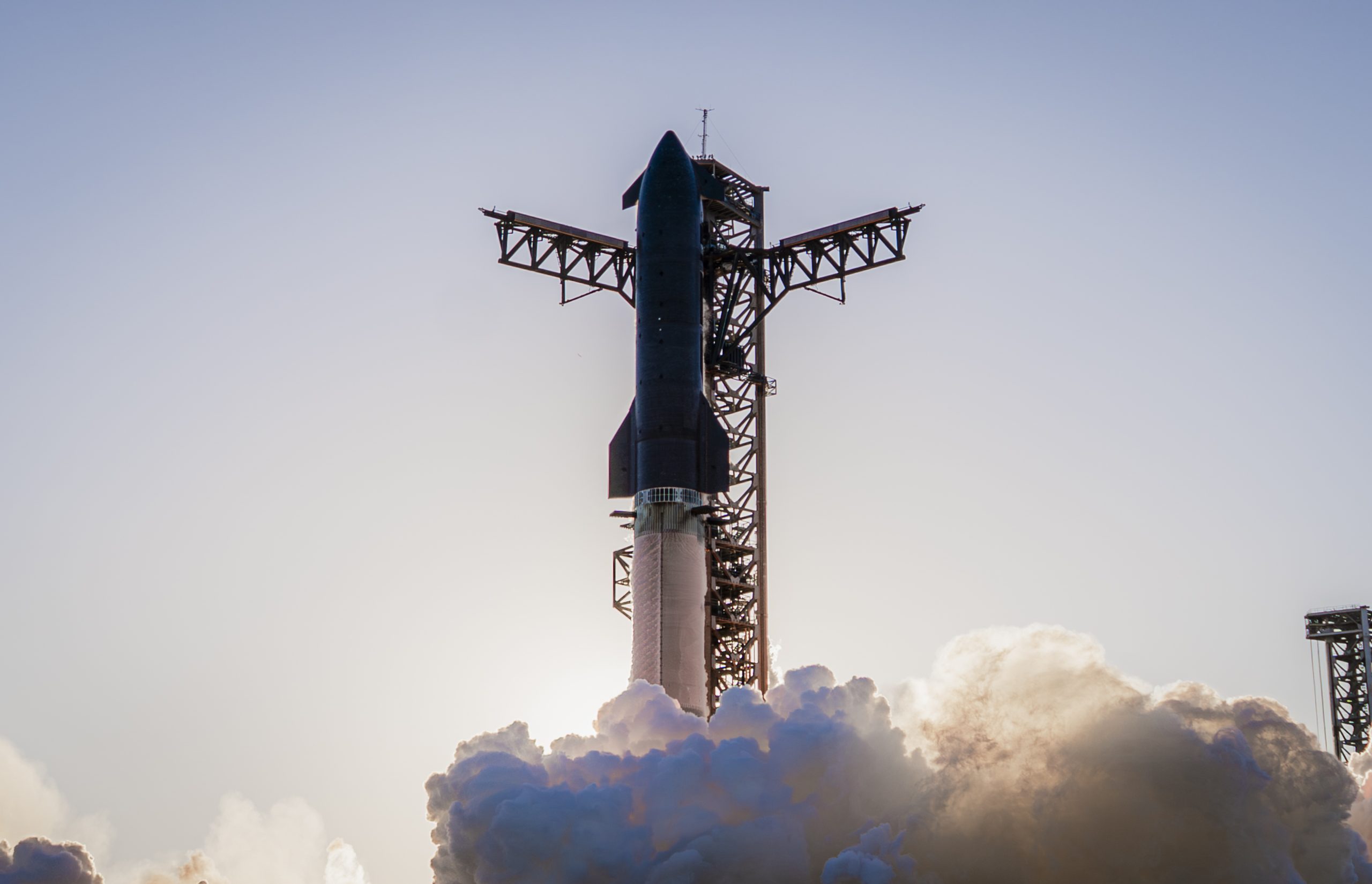
SpaceX has revealed that it has completed 49 major milestones for NASA’s Human Landing System (HLS) program, marking significant progress in the development of the Starship lunar lander that will deliver astronauts to the Moon.
The updates were detailed in SpaceX’s new blog post To the Moon and Beyond, which was recently posted on the private space company’s official website.
As noted by SpaceX, the 49 milestones that were completed by its HLS team were “tied to developing the subsystems, infrastructure, and operations” needed to safely land humans back into the lunar surface. SpaceX noted that it has only received funding on contractual milestones that have been successfully completed, the vast majority of which have been achieved on time or ahead of schedule.
Following are highlights of SpaceX’s completed milestones, as per the company’s post.
For the first time in our existence, we possess the means, technology, and, for the moment, the will to establish a permanent human presence beyond Earth. Starship is designed to make this future a reality → https://t.co/dGAZiB4rr3 pic.twitter.com/WsTg44G3oz — SpaceX (@SpaceX) October 30, 2025
- Lunar environmental control and life support and thermal control system demonstrations, using a full-scale cabin module inhabited by multiple people to test the capability to inject oxygen and nitrogen into the cabin environment and accurately manage air distribution and sanitation, along with humidity and thermal control. The test series also measured the acoustic environments inside the cabin
- Docking adapter qualification of the docking system that will link Starship and Orion in space, an androgynous SpaceX docking system capable of serving as the active system or passive system and based on the flight-proven Dragon 2 active docking system
- Landing leg drop test of a full-scale article at flight energies onto simulated lunar regolith to verify system performance and to study foot-to-regolith interaction
- Raptor lunar landing throttle test demonstrating a representative thrust profile that would allow Starship to land on the lunar surface
- Micrometeoroid and orbital debris testing of shielding, insulation, and window panels, analyzing different material stackups that will be used to protect Starship from impact hazards and harsh thermal conditions
- Landing software, sensor, and radar demonstrations testing navigation and sensing hardware and software that will be used by Starship to locate and safely descend to a precise landing site on the Moon
- Software architecture review to define the schematic of major vehicle control processes, what physical computers they will run on, and software functions for critical systems like fault detection, caution and warning alerts, and command and telemetry control
- Raptor cold start demonstrations using both sea-level and vacuum-optimized Raptor engines that are pre-chilled prior to startup to simulate the thermal conditions experienced after an extended time in space
- Integrated lunar mission operations plan review, covering how SpaceX and NASA will conduct integrated operations, develop flight rules and crew procedures, and the high-level mission operation plan
- Depot power module demonstration, testing prototype electrical power generation and distribution systems planned to be used on the propellant depot variant of Starship
- Ground segment and radio frequency (RF) communications demonstration, testing the capability to send and receive RF communications between a flight-equivalent ground station and a flight-equivalent vehicle RF system
- Elevator and airlock demonstration, which was conducted in concert with Axiom to utilize flight-representative pressurized EVA suits, to practice full operation of the crew elevator which will be used to transfer crew and cargo between Starship and the lunar surface
- Medical system demonstration covering the crew medical system on Starship and the telemedicine capability between the ground and crew
- Hardware in the loop testbed activation for the propellant transfer flight test which uses a testbed with flight representative hardware to run simulations for the upcoming propellant transfer flight test
Ultimately, SpaceX’s message is clear. With its plans for a simplified architecture, the timeframe of the first crewed lunar landing of the current century could happen sooner than expected.
Musk definitely seems determined to prove skeptics wrong, with the CEO declaring on X that Starship will be the vehicle that would pave the way for the buildout of a base on the Moon. “Starship will build Moonbase Alpha,” Musk wrote.
News
SpaceX sets the record straight on Jim Bridenstine and Artemis 3
SpaceX argued that Bridenstine’s comments should be taken with a grain of salt as he is working as a paid lobbyist for companies that are competing for NASA contracts.
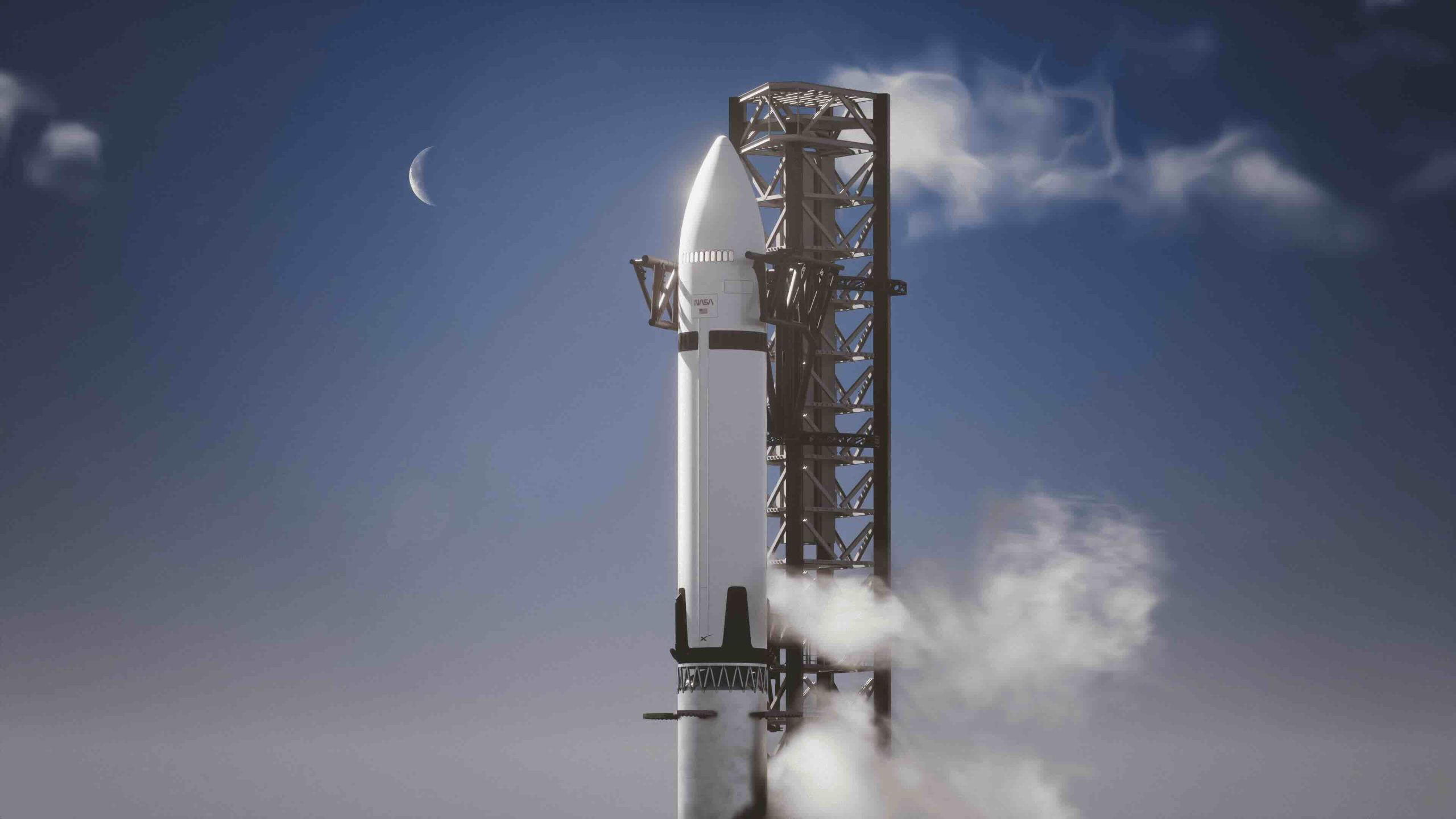
SpaceX pushed back firmly against former NASA administrator Jim Bridenstine after he questioned the agency’s reliance on Starship for the Artemis 3 Moon mission.
In a detailed thread on X, SpaceX argued that Bridenstine’s comments should be taken with a grain of salt as he is working as a paid lobbyist for companies that are competing for NASA contracts.
Bridenstine’s comments on Starship and Artemis 3
Bridenstine and fellow former NASA chief Charlie Bolden noted during a recent symposium that NASA’s current Artemis strategy is approaching zero chance of beating China to the Moon. Bridenstine expressed skepticism that NASA’s current architecture, which is expected to use Starship to transport astronauts to and from the lunar surface, could succeed in time.
“Starship is a tremendously important vehicle for the future,” Bridenstine said, as per Space News. “It’s going to deliver large mass to low Earth orbit for a long time, and it’s going to drive down costs and increase access. But if you need a moon lander, it’s going to take time.”
SpaceX responds to the former NASA administrator’s comments
In a series of posts on X, SpaceX noted that while the company is very thankful to the former NASA administrator for helping create the Artemis Program, his comments about Starship might not necessarily be coming from a place of objectivity.
SpaceX’s comments are as follows: “Like many Americans, we are thankful for Mr. Bridenstine’s service leading NASA at one point. He deserves credit for spearheading the creation of the Artemis Program. After departing NASA, he created a lobbying firm called the Artemis Group, representing a host of aerospace companies vying for NASA business.
“Mr. Bridenstine’s current campaign against Starship is either misguided or intentionally misleading. SpaceX was selected to design and develop a Human Landing System for Artemis along with Blue Origin and Dynetics during Mr. Bridenstine’s tenure as NASA Administrator.
“Starship was then selected by NASA for the Artemis III mission through fair and open competition after being identified as the best and lowest risk technical option – and the lowest price by a wide margin – by the civil servant team appointed to lead the agency’s exploration mission by Mr. Bridenstine himself.
“The decision to select Starship was confirmed repeatedly following protest and litigation from the companies not selected which delayed the start of work on the contract for many months. Mr. Bridenstine’s recent musings promoting a new landing system – going so far as to invoke the Defense Production Act – are being misreported as though they were the unbiased thoughts of a former NASA Administrator. They are not.
“To be clear, he is a paid lobbyist. He is representing his clients’ interests, and his comments should be seen for what they are – a paid lobbyist’s effort to secure billions more in government funding for his clients who are already years late and billions of dollars overbudget,” SpaceX wrote.
-
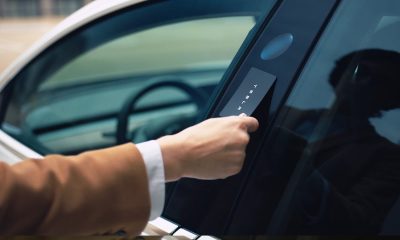
 News2 weeks ago
News2 weeks agoTesla might be doing away with a long-included feature with its vehicles
-

 News2 weeks ago
News2 weeks agoTesla updates fans on its plans for the Roadster
-

 Elon Musk2 weeks ago
Elon Musk2 weeks agoElon Musk: Grok 5 now has a 10% chance of becoming world’s first AGI
-

 News2 weeks ago
News2 weeks agoTesla is ramping up its hiring for the Cybercab production team
-

 News2 weeks ago
News2 weeks agoTesla rolled out a new feature with FSD v14 to fix a major complaint
-
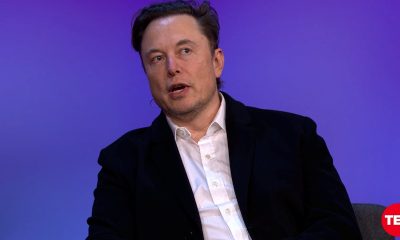
 Elon Musk2 weeks ago
Elon Musk2 weeks agoElon Musk hits back at former Tesla employee who disagrees with pay package
-
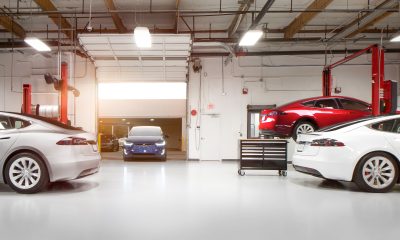
 News2 weeks ago
News2 weeks agoTesla just made Service even easier and more convenient
-

 News2 weeks ago
News2 weeks agoTesla Model Y L becomes China’s 4th best-selling mid-to-large SUV in its first month of sales




